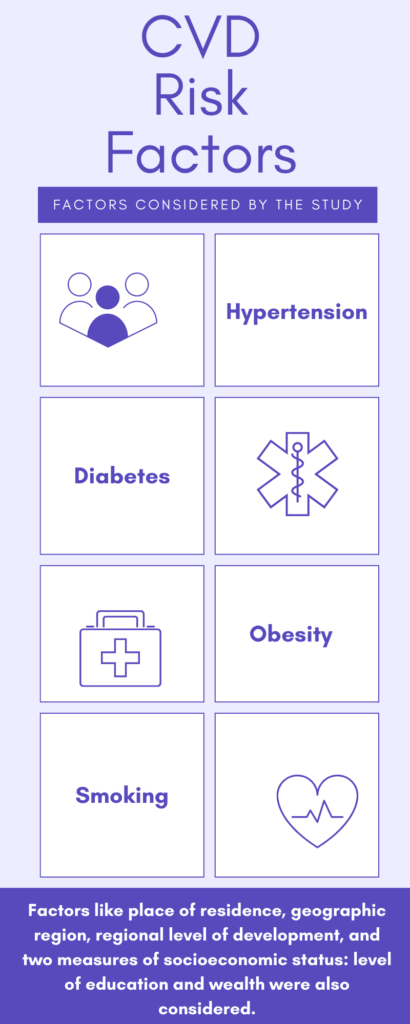A recent Lancet study has shed light on a concerning trend in Cardiovascular Disease (CVD) risk factors among Indians.
A study has revealed that the risk factors for CVD have increased among disadvantaged groups, such as poor individuals, while remaining stable or even decreasing among wealthier individuals.
The study found that the prevalence of CVD risk factors, such as hypertension, diabetes, and obesity, have increased significantly among individuals from disadvantaged groups. This is a cause for concern, as individuals from these groups are already at a higher risk of CVD due to a range of social determinants of health, including poverty, lack of access to healthcare, and unhealthy living conditions.
On the other hand, the study found that CVD risk factors remained stable or decreased among wealthier individuals. This could be due to factors like better access to healthcare, education, and healthier living environments.

Ananth Ram, a public health expert, said that most habits in urban and rural areas are similar now. “The risk factors of non-communicable diseases can be classified as behavioural risk factors like unhealthy diet, lack of physical activity, smoking, stress, lack of sleep, and mainly the quality of air and the surroundings that people live in, ” he added.
He also said that the pattern of occurrence of these risk factors is mostly the same in urban and rural India.
Mr. Ram said that the Lancet study has provided important insights into the changing trends in CVD risk factors among Indians. “The study’s findings highlight the urgent need for targeted interventions to address the growing burden of CVD among disadvantaged groups in India,” he added.
He also highlighted the need for policies and programs that prioritize addressing the health needs of disadvantaged communities and ensuring equitable access to healthcare and other resources.
Shanthamma is a farmer in Kushtagi, Karnataka. Her husband passed away last year due to COVID and an underlying heart disease. She said, “I wish we had better access to healthcare, as farmers we do not make enough to cover all the medical costs that are needed to treat a heart disease.”
However, Radha a software engineer working in Bengaluru gets a yearly health check up along with her family. “I am glad we get yearly check-ups, it prepares us and keeps us informed of our health,” she said. Radha has access to healthcare and is in a position to get frequent check-ups while people like Shanthamma still do not.
The study has also focused on the need for targeted interventions to address the growing burden of CVD risk factors among disadvantaged groups in India. This includes improving access to healthcare and education, addressing poverty, and promoting healthier living environments. Addressing the root causes of poverty and inequality is crucial for improving health outcomes and reducing the burden of CVD and other chronic diseases, said sources.
Mr. Ram emphasized on the need for a comprehensive approach to addressing CVD risk factors in India. “We need to tackle the social determinants of health that underpin CVD risk factors, such as poverty, lack of education, and poor living conditions. We also need to promote healthy lifestyles and ensure that everyone has access to affordable healthcare,” he said.



